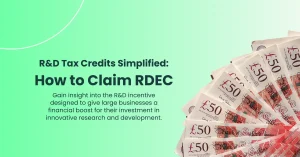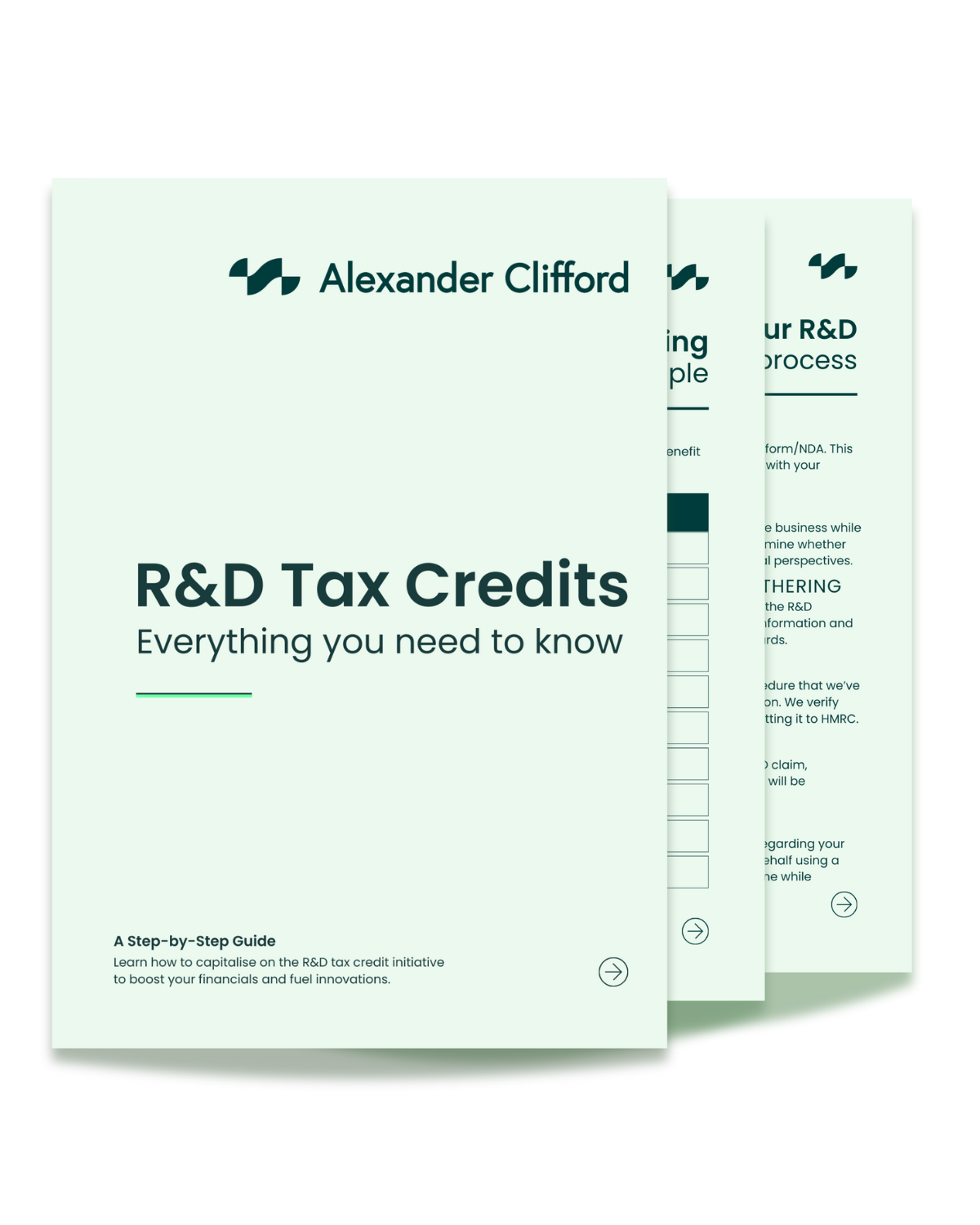R&D Tax Credits for UK Life Sciences Sector

The UK life sciences sector is one of the most exciting and fast-moving in the world. From breakthrough therapies and diagnostic tools to AI-driven health platforms and genomic research, it’s an industry built on continuous innovation. But as every founder or R&D lead knows, innovation doesn’t come cheap.
That’s where R&D tax credits come in. Designed to reward scientific and technical progress, these government-backed incentives can help life sciences businesses reclaim a significant portion of their R&D spend if you know how to claim correctly. With the new rules introduced in 2025, the way claims are assessed has changed. In this guide, we break down what you need to know to maximise your benefit under the updated HMRC framework.
What Are R&D Tax Credits in the Life Sciences Sector?
R&D tax credits are a form of government support for businesses pushing the boundaries of science and technology. They’re designed to encourage companies to take risks, solve complex problems, and invest in innovation.
For eligible, UK-registered companies, they can result in either:
- A reduction in your corporation tax bill, or
- A cash payment if your business is loss-making.
In the life sciences space where R&D costs often run high and funding cycles are tight this can be a real boost. And the best part? You don’t have to be a large pharmaceutical giant to qualify.
Who in Life Sciences Can Claim R&D Tax Relief?
This relief isn’t limited to big players. Many smaller or early stage businesses are eligible too. If your work involves tackling scientific or technical challenges, you may well qualify.
Businesses that can typically claim include:
- Biotech firms developing new drugs, biologics or gene therapies
- Medtech companies designing new devices or diagnostics
- CROs and CDMOs carrying out formulation or clinical testing
- Digital health companies using AI or data science in healthcare
In short, if your team is working on something that couldn’t be easily solved by someone in the field and you’re not just following a known path, then HMRC will likely view it as eligible R&D.
Examples of Qualifying R&D in Life Sciences
Drug Discovery & Formulation
- Trying to improve how a compound is delivered in the body
- Solving stability or solubility issues in early drug design
- Developing novel formulations that go beyond routine methods
Medical Devices & Diagnostics
- Creating new biosensor technology or wearable health devices
- Enhancing the accuracy or usability of diagnostic platforms
- Meeting regulatory testing challenges that require innovation
Genomics, AI & Digital Health
- Using machine learning to analyse genetic data or model disease
- Building AI tools for personalised medicine or clinical decision support
- Developing platforms that integrate genomics with electronic health records
If your work involves testing, experimenting, and trying new methods to achieve a better outcome — not just applying off-the-shelf tech — you may be carrying out qualifying R&D.
Which R&D Scheme Applies to You in 2025?
From April 2024 onwards, HMRC has introduced a Merged Scheme which affects how most companies apply. But some exceptions still apply.
SME Scheme (if your year started before 1 April 2024)
Still available for smaller businesses that:
- Employ fewer than 500 staff
- Have less than €100 million turnover
- Weren’t heavily grant funded
This scheme offers an enhanced deduction and, in some cases, a generous cash payment.
Merged Scheme (most current claims from April 2024)
Now the default for most life sciences businesses both large and small this scheme streamlines the rules and is based on the old RDEC system.
R&D Intensive SME Relief (for R&D loss-making firms)
If your business spends 40% or more of total costs on qualifying R&D which is often the case in early stage biotech and medtech companies, you may be eligible for a higher cash credit even under the new merged system.
What Costs Can Be Claimed in Life Sciences R&D?
The nature of life sciences means R&D often involves multiple teams, expensive equipment, and specialist tools. Many of those costs may be claimable as long as they’re directly related to qualifying R&D work.
You may be able to include:
- Staff salaries for scientists, engineers, lab technicians, software developers, and data scientists
- Consumables like lab reagents, test kits, or cell cultures used up in the R&D process
- Clinical trial costs, especially in early phases with technical challenges
- Software and cloud services used for bioinformatics or modelling
- CRO or CDMO costs, if the R&D work was subcontracted under HMRC-compliant terms
Just remember: HMRC is stricter than ever about linking costs to qualifying activity. Evidence matters.
Common Challenges in Claiming R&D Tax Relief in Life Sciences
Claiming isn’t always straightforward, especially with the complexities of the sector.
Technical Justification
It’s not enough to say you’re “doing R&D” you need to clearly explain the scientific uncertainty you faced and how your work went beyond routine practice. This is especially key in regulated sectors like health and biotech.
Grant Funding
A lot of life sciences firms receive Innovate UK or Horizon Europe grants. While great for funding, they can limit your access to certain schemes. You’ll often need to apply under the Merged Scheme or RDEC rules instead of the SME route.
Subcontracting
Working with CROs or CDMOs? You’ll need to show you had control over the R&D and clearly document what work was done, by whom, and where. HMRC has tightened its stance on this in 2025.
FAQs: Life Sciences R&D Tax Credits
Can we claim for pre-clinical or Phase I trials?
As long as you’re tackling technical uncertainty, these early stage trials can definitely qualify.
Can we still claim if we don’t own the IP in the UK?
IP ownership isn’t required, but the R&D must be carried out by a UK entity.
What about animal testing or simulations?
If these activities are used to resolve scientific uncertainty, they’re typically eligible.
Maximise Your Lab’s Potential with R&D Tax Credits
The UK life sciences sector is solving some of the biggest health challenges of our time. R&D tax relief exists to support that journey but only if your claim is well prepared and compliant with the latest rules.
With new 2025 guidance in place, now’s the time to review how you’re approaching your claim. Whether you’re developing the next cancer therapy, building diagnostic AI, or improving drug delivery systems, make sure your innovation gets the financial support it deserves. If you’re running a biotech, medtech, or digital health business, chances are you’re sitting on a valuable R&D claim but it needs to be done right.
At Alexander Clifford, we specialise in R&D tax credits supporting life sciences businesses through the R&D tax claiming process. We’ve worked with everyone from early stage spinouts to global medtech leaders and we know how to present claims that meet HMRC’s standards without adding to your workload.
Want to find out what you could claim? Book a free assessment or fill in the contact form below with one of our R&D tax advisors today.
Book a quick call







